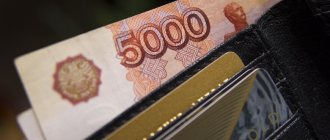Unfortunately, the development of technology also has a downside: scammers who previously operated in markets and streets have now moved to the Internet. Their actions primarily affect services that provide direct access to money: cryptocurrency exchanges, electronic wallets, insurance companies and microfinance organizations.
According to Webbankir statistics, on average 5-6% of incoming applications from potential borrowers have signs of fraud. The situation is even more alarming if you look at the initial appeals. Here the share of dubious applications is many times higher. In other words, almost every third client who applies for a loan for the first time may act for fraudulent purposes.
Of course, the risk of default always exists. Anyone can misjudge their financial capabilities, or sudden circumstances may arise that prevent them from paying off on time. The main difference between a scammer is that he is not going to return the money from the very beginning.
Advertising on Forbes
The fact of fraud is revealed when the borrower refuses to pay and says that he did not take out the loan, but someone else did it for him. There are cases when scammers take out loans for people they know well - neighbors, relatives or acquaintances. Or even borrow from each other.
As a rule, loan amounts are small - up to 15 thousand rubles. However, professional scammers operate on a large scale, submitting dozens, hundreds or even thousands of applications to various microfinance companies. As a result, the industry and individual companies suffer multi-million dollar losses. Moreover, the larger the business, the more likely it is that it will become a target for fraudsters.
How scammers work
The main types of fraud in online lending are obtaining loans through false persons, falsifying documents, and obtaining information on credit histories through illegal means. In all these cases, access to confidential information is required (passport data, TIN, telephone numbers, places of work, etc.). Illegally obtained databases and phishing sites are used, which disguise themselves as resources of legitimate organizations in order to force the user to enter the necessary information.
In the first eight months of 2021, FinCERT (a structural division of the Bank of Russia responsible for monitoring and responding to computer attacks in the credit and financial sector) detected 481 fraudulent domains of various topics.
The top 5 included p2p transfer services (84 domains), insurance companies (45), fake banks (44), financial pyramids (39) and fake MFOs (29). The Central Bank also reported 309 complaints from clients of microfinance organizations about theft of personal data during this period. It would seem that three hundred for the whole of Russia is not a very impressive figure, but back in 2021, no such complaints were registered at all.
Having issued a loan to another person, amateur scammers often transfer money to their own bank card. In this case, identifying the attacker is not difficult. More experienced scammers use so-called “drops” - bank cards opened in someone else’s name. They are often issued to homeless people: if a person has a passport, many banks will open him a debit card.
There are also people who deliberately register cards in their name so that they can later sell them to third parties and report them as lost. By the time the bank blocks the card, the fraudster will already have time to withdraw funds from it.
How to recognize scammers?
If you decide to call back the phone number specified in the message in order to still apply for a loan, you should be wary of several points. Firstly, when you are asked to make an advance payment (“We will give you the money, we just need a quick transfer and payment for courier delivery of papers”). Serious financial institutions do not require the borrower to make any advance payment, loan approval fee, insurance payment, courier delivery or other services.
Secondly, you can find the organization that sent the SMS on the Internet (but under no circumstances click on the links in the message). If the company has a website, check that there is an address, hotline phone number or city number, email, information about the license issued by the Bank of Russia and confirming the right to operate. Is there no organization in the register of the Bank of Russia that offers a loan? Provide information about her to the police or Rospotrebnadzor.
Confusing lending conditions and zero requirements for the borrower are the third key point. Normal financial organizations clearly spell out everything and hide nothing. In addition, banks and microfinance organizations check the client’s credit history. If the organization doesn't care about it, you are being deceived. File a police report and tell them all the information about the scammers.
Are MFIs ready to forgive?
The popularity of online lending among scammers has several reasons. First of all, this is a difficult economic situation, which forces people to look for not entirely honest, and sometimes even illegal, ways to earn money. There is a widespread myth that microfinance organizations are ready to write off any losses, because they will still remain in profit thanks to astronomical interest.
In part, these sentiments are fueled by officials when they call microfinance “worse than an old money-lender,” etc. Stealing money is not good, but deceiving a “world-eater” seems to be normal - you’re almost Robin Hood.
To get an online loan, you do not need to visit the office, communicate with an employee of the credit institution and show your passport. The Internet creates a feeling of anonymity and impunity. That is why the share of dubious applications here is several times higher than in traditional lending, where it does not exceed 1%. Are companies operating on the Internet ready to put up with this? Not really.
Interest rates in microfinance are indeed higher than in bank consumer lending, but defaults are also twice as common. An acceptable level is considered if 15–20% of loans are not repaid.
High interest rates are precisely designed to compensate for default risks. Therefore, contrary to popular myth, any attempt at fraud, even for 3,000 rubles, is thoroughly investigated by the economic security service. After all, the better a company is at preventing fraudulent activities, the more advantageous an offer it can make for respectable borrowers.
How to spot a scammer
The fight against fraudsters begins at the stage of consideration of the application. Thanks to the use of big data, today you can learn much more about a person on the Internet than through personal communication. Each borrower is analyzed according to several hundred different parameters: credit history, verification of passport and personal data, profiles on social networks, and so on. None of the signs allows us to clearly conclude that the application is being submitted by a fraudster, but together they give a very clear picture.
Here are some suspicious triggers. A person who contacts the company for the first time is not interested in the terms of obtaining a loan, that is, he does not study the site and does not use the loan calculator. When filling out an application, he often enters data using copy-paste, which indicates the presence of a template - most likely, the person submits applications to many companies at once.
He indicates in the questionnaire that he lives and works in one city, but according to geotargeting he is now in another. Several applications are submitted from the same IP or from similar phone numbers (to submit a large number of applications, scammers often buy SIM cards in bulk and the numbers differ by one or two digits). It also takes into account which sites the user visited. For this, so-called evercookies are used - cookies that cannot be deleted by simply clearing the browser history.
Advertising on Forbes
Cooperation with cellular operators helps to significantly improve threat control. Thanks to the fact that they track phone signals through cell towers, it is possible to determine the location of a person even if he did not allow access to his geolocation. In addition, mobile operators know the IMEI - the identification number of each mobile phone registered on the network. This allows you to track calls not only from a specific SIM card, but also from a specific device. Fraudsters often use different SIM cards, but not everyone changes their phone for one call.
Among the new means of combating fraudsters, we can note the emergence of anti-fraud services based on credit history bureaus. They are currently undergoing testing. The principle of their operation is similar to the scoring model - in fact, they allow companies to exchange data about suspicious clients and make a decision on issuing a loan based not only on their own, but also on the statistics of other market participants. The measure promises to be very effective, given that, as a rule, fraudsters make multiple requests to several different microfinance organizations.
In turn, the regulator is also constantly introducing new identification systems that make life more difficult for fraudsters. For example, according to the law “On Credit Histories”, starting from 2021, financial organizations can receive data on citizens’ credit histories from BKI only if they have an individual personal account insurance number (SNILS).
In fact, this means that when filling out an application, the borrower is required to indicate his SNILS. Since this is less common information than passport data, the number of scammers has actually decreased for some time.
Today, the Central Bank plans to extend the Unified System of Identification and Authentication program to the financial market, which already provides authorized access for citizens to information contained in government information systems through the government services website. It is expected that once a year Russians will come to authorized points and, upon presentation of their passport, receive a unique code for conducting financial transactions on the Internet.
Advertising on Forbes
The person himself will be responsible for the loss of the code, as, for example, in the case of a PIN code for a bank card. That is, gaining access to this information will be at least as difficult as hacking a bank card.
How to protect yourself?
If you are worried about your credit history and every SMS message about an approved loan, you can make a monthly request to the credit history bureau and see if any loans have been issued in your name. This procedure can be done for free once a year, and for money - at least every day. The cost of one request is from 400 to 1000 rubles, depending on the service.
But the best way, according to experts, is to live within your means. Change your lifestyle and rebuild yourself so that you don’t make unnecessary purchases, and only use loans for a mortgage. You can earn money for everything else.
What's the payback?
If fraud does occur, the task of the economic security service is to determine whether the person really did not take the money and became a victim of criminals or is trying to refuse to pay the debt in this way. It is established who and when issued the loan, who made the decision to issue it, and what data of the borrower may not correspond to reality.
The person in whose name the scammers issued the loan bears reputational risks (damaged credit history, calls from debt collectors, etc.). However, it is the company that bears direct material damage, so upon inspection, it will definitely file a statement with the police.
The result, as a rule, is real criminal cases with restriction of freedom for up to two years and payment of compensation in favor of the state. So getting a criminal record for stealing 10,000 rubles is quite possible. And completely stupid.
Borrowers against their will: what to do if scammers apply for a loan on you
In the capital, cases of obtaining loans using forged documents have become more frequent. False borrowers use other people's passports and personal data to obtain money. It can be extremely difficult to prove to the bank that you are a victim and not a malicious defaulter, reports the Vesti-Moskva program.
— The scammers pasted another photo into my passport and issued a number of loans. Collectors call me almost every day demanding to pay off this debt.
Nina's bag was stolen along with all her documents. Using her passport, the scammers issued a loan for 47 thousand rubles. Now the amount of debt is almost 60 thousand.
“This loan is now making my life very difficult. I can’t take out an additional loan, I can’t get car insurance with a good ratio, because they open a credit history and see that this debt hangs on me,” complains Nina Kokoshvili.
The fact that Nina did not take out the loan was confirmed by a court decision. But collectors don't care. The bank, where she is listed as a malicious debtor, also does not want to understand the situation.
On behalf of Maria Frolova, someone bought a laptop worth almost 100 thousand on credit. She herself learned about this purchase from collectors.
“The collectors told me: no, my dear, you won’t get away from us, you have a laptop at home, and you tell us that you didn’t take out any loan. I was shocked. I think where, when? They didn't tell me the city. They said that this was done using a photocopy of my passport,” says Maria Frolova.
The scammers took several more loans from microfinance organizations based on a scan of Maria’s passport.
“This is the other side of our digitalization, when documents are trusted first of all. Documents are often requested remotely. Some microfinance organizations issue loans without personal presence at all,” explains lawyer Dmitry Zhdanukhin.
A copy of the document can be purchased for a symbolic 7-10 rubles on a website where stolen personal data is openly sold. A photograph of a person with a passport costs a little more. But it’s enough to apply for a loan on the Internet in a few minutes.
— You can fill out a form, take out a loan, there is no need to sign an agreement, it comes in electronic form. That is, you sign a document using an SMS code.
— How can you check that I took out a loan on my passport and not on someone else’s?
No way. Microfinance companies admit that they have never seen many clients. To avoid becoming a debtor involuntarily, you need to be very careful with your documents.
“It is impossible to completely protect yourself. The only thing that can be advised here is that if you are asked for your passport information, do not be lazy to rewrite your data, and not just give a copy of your passport.” – says lawyer Alexander Sirotkin.
But if you still receive a call from collectors, and you are sure that you did not take out any loan, then lawyers advise urgently writing a statement to the police and informing the bank.










